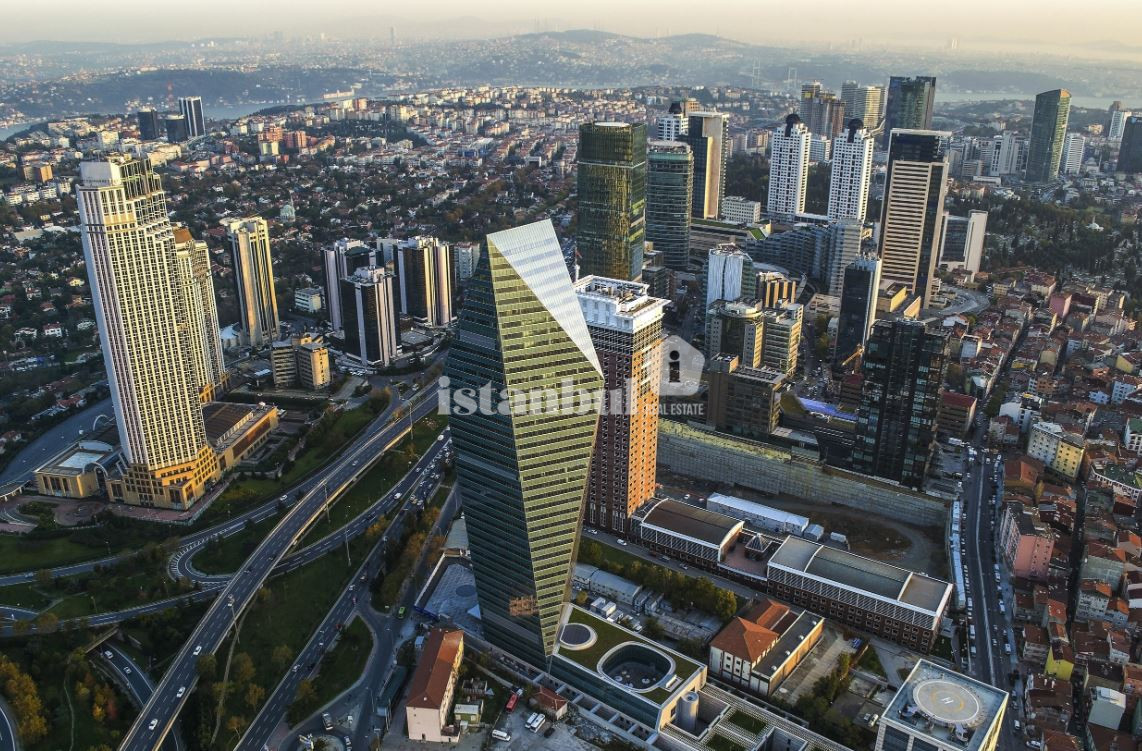
- 21 October 2023
Rising Skyline: The Evolution of High-Rise Buildings in Istanbul
Rising Skyline: The Evolution of High-Rise Buildings in Istanbul
Introduction:
Istanbul’s architectural landscape has been undergoing a remarkable transformation over the past few decades. As the city’s skyline continues to evolve with the construction of impressive high-rise buildings. From traditional minarets to modern skyscrapers. The urban fabric of Istanbul has witnessed a fascinating journey of innovation and progress. In this article, we delve into the captivating evolution of high-rise buildings in Istanbul. Tracing the city’s architectural history from its ancient roots to its contemporary aspirations.
Historical Roots of Vertical Architecture:
 Istanbul’s history is rich with architectural marvels, and its transition to vertical architecture began centuries ago. The city’s iconic Hagia Sophia, which was built in 537 AD, can be seen as a precursor to the grandeur that later high-rise buildings would embody. The minarets of the city’s numerous historic mosques also stand as early examples of verticality in architecture, blending aesthetic beauty with functional design.
Istanbul’s history is rich with architectural marvels, and its transition to vertical architecture began centuries ago. The city’s iconic Hagia Sophia, which was built in 537 AD, can be seen as a precursor to the grandeur that later high-rise buildings would embody. The minarets of the city’s numerous historic mosques also stand as early examples of verticality in architecture, blending aesthetic beauty with functional design.
The Modern Leap: Skyscrapers in Istanbul:
 The dawn of the 21st century marked a new era for Istanbul’s architectural ambitions. With rapid urbanization and a growing demand for commercial and residential spaces, the city embraced modern skyscrapers as symbols of progress. The Sapphire Tower, completed in 2011, became a landmark not only for its height but also for its eco-friendly features, setting the tone for sustainable vertical development in Istanbul.
The dawn of the 21st century marked a new era for Istanbul’s architectural ambitions. With rapid urbanization and a growing demand for commercial and residential spaces, the city embraced modern skyscrapers as symbols of progress. The Sapphire Tower, completed in 2011, became a landmark not only for its height but also for its eco-friendly features, setting the tone for sustainable vertical development in Istanbul.
Balancing Tradition and Innovation:
As Istanbul strives to maintain its cultural heritage while embracing modernity, architects have been challenged to create high-rise buildings that seamlessly blend tradition with innovation. The Zorlu Center, a mixed-use development featuring a high-rise tower, showcases a harmonious fusion of contemporary design and nods to the city’s Ottoman past. This balance between old and new exemplifies Istanbul’s unique approach to vertical architecture.
Architectural Marvels Shaping the Skyline:
 The Istanbul Sapphire, the city’s tallest skyscraper, stands as a testament to Istanbul’s determination to reach new heights. Its sleek design and panoramic views of the Bosphorus embody the city’s aspirations for global recognition. Equally impressive is the Metropol Istanbul, a mixed-use development that integrates residential, commercial, and recreational spaces in a single high-rise complex, reflecting the city’s dynamic urban lifestyle.
The Istanbul Sapphire, the city’s tallest skyscraper, stands as a testament to Istanbul’s determination to reach new heights. Its sleek design and panoramic views of the Bosphorus embody the city’s aspirations for global recognition. Equally impressive is the Metropol Istanbul, a mixed-use development that integrates residential, commercial, and recreational spaces in a single high-rise complex, reflecting the city’s dynamic urban lifestyle.
Sustainable Vertical Living:
In recent years, sustainability has become a paramount consideration in high-rise construction. Istanbul’s high-rises are now designed with eco-friendly materials, energy-efficient systems, and green spaces that promote a healthier urban environment. This commitment to sustainability not only benefits the city’s residents but also positions Istanbul as a responsible global player in architectural innovation.
Looking Ahead – The Future Skyline:
 As Istanbul continues to evolve, its skyline is set to welcome even more striking high-rise buildings. With visionary projects in the pipeline, such as the Galataport Tower and the Istanbul Finance Center, the city is poised to redefine its architectural identity on the world stage. These upcoming structures will showcase cutting-edge design, advanced technology, and a profound understanding of urban functionality.
As Istanbul continues to evolve, its skyline is set to welcome even more striking high-rise buildings. With visionary projects in the pipeline, such as the Galataport Tower and the Istanbul Finance Center, the city is poised to redefine its architectural identity on the world stage. These upcoming structures will showcase cutting-edge design, advanced technology, and a profound understanding of urban functionality.
Buildings in Istanbul
Istanbul’s journey from its historic minarets to its modern skyscrapers is a reflection of the city’s ability to adapt. Innovate, and embrace change while cherishing its rich heritage. The evolution of high-rise buildings in Istanbul is a living testament to the city’s resilience. Aspiration to create a dynamic urban landscape that captivates both locals and visitors alike.
